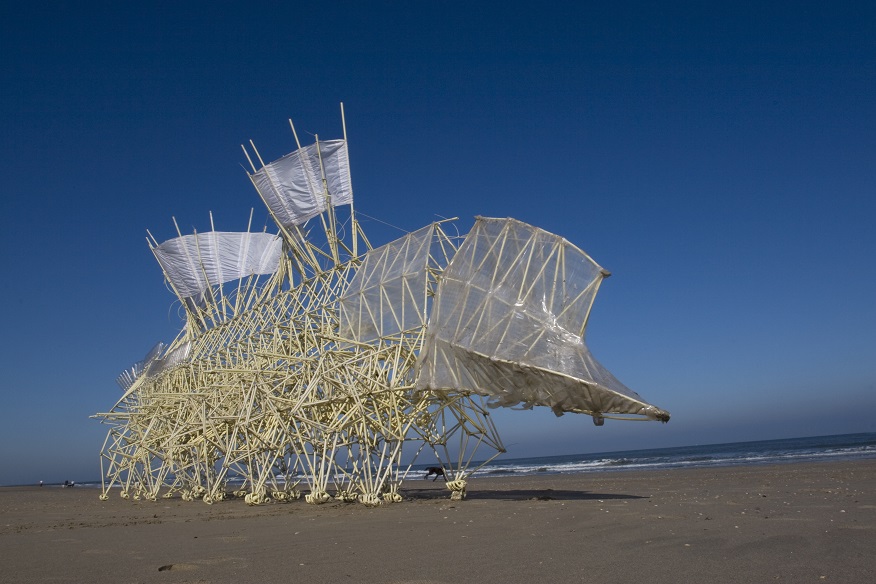
Strandbeest – Wind-driven sculpture by Theo Jansen (click to watch)
Last week a number of us from the conservation community had a meeting with Doug Haas, Senior District Representative for Congressman Salud Carbajal from California’s Central Coast. Representative Carbajal is on the Offshore Wind caucus as his district includes Morro Bay, where some 400 sq. miles of wind farm “call area” will eventually land their power cables.
Our groups included folks in environmental law (Environmental Defense, NRDC, Defenders of Wildlife), Biologists (Monterrey Bay Aquarium, Center for Biological Diversity), birders (Audubon) and garden variety conservation organizations (Surfrider and Sierra Club). While all of us support offshore wind development, we also all want to make sure it is handled correctly, because huge swaths of the Outer Continental Shelf will be transformed by this pivot away from fossil fuels.
And there are a lot of things to get right – starting with knowing what the environment is that will be changing. This will require a robust baseline understanding across all taxa, from marine invertebrates, to fish, to marine mammals, to birds. And these studies need to be framed from an individual species standpoint, as well as systematic understanding of habitat and species interactions. They will also need to dovetail into “longitudinal” studies – evaluating changes over time; before siting, siting surveys, installation, and operations – within an area just a bit smaller than the City of Los Angeles, there will be a lot to monitor.
Cal Poly San Luis Obispo is thrilled, of course; as they have marine biology, engineering, and project management departments just ready to expand. But other universities like UCSB, UCSC, and UC Davis biology departments are also expected to put their shoulders behind the monitoring efforts.
Given the extent of the biological monitoring, I suggested that there might be a clearing house for all of the studies to make sure that data gaps are exposed, and efforts aren’t duplicated.
The “mechanical” logistics include where to port the survey, construction, and service vessels. A port needs to be large, and deep enough to handle large assembly craft, with shore facilities expansive enough to handle shipping or even manufacturing of the parts of the turbines.
To get an idea of the scope of this: San Francisco Bay has shore facilities (shipping, warehousing, and manufacturing, etc.) in Richmond, Oakland, and San Pablo expansive enough to handle land-based operations, but the equipment would not fit under the Golden Gate Bridge(!).
The discussions are focusing in on Port Hueneme – expansive enough to handle facilities development, close enough to freight-duty rail lines and industrial manufacturing, and only 150 miles by sea from the Morro Bay call area.
Our discussion was focused on conservation concerns; baselining, and longitudinal studies on the impacts of siting; installation, operations, and ongoing support. While we didn’t have any commercial or recreational fishers on the call, we punctuated their needs and concerns, given that the small, but important Morro Bay fleet uses pretty much all fishing methods: crab traps, outriggers, long lines, and nets. They even catch swordfish in the area. So gear entanglement and exclusion areas are of concern for them.
We only mentioned the commercial shipping and maritime industry – wending their way through the wind farm, and the significant increase in vessel traffic crossing paths. But also on the dashboard is the proposed Chumash National Marine Sanctuary.
So we are not just talking about unplugging pipelines and plugging in power cables. Sunsetting a 100-year legacy industry involves building and migrating infrastructure, establishing policies and practices, and asking pretty much everyone to move in various ways to accommodate a nation-scale enterprise – with lots of moving parts…

